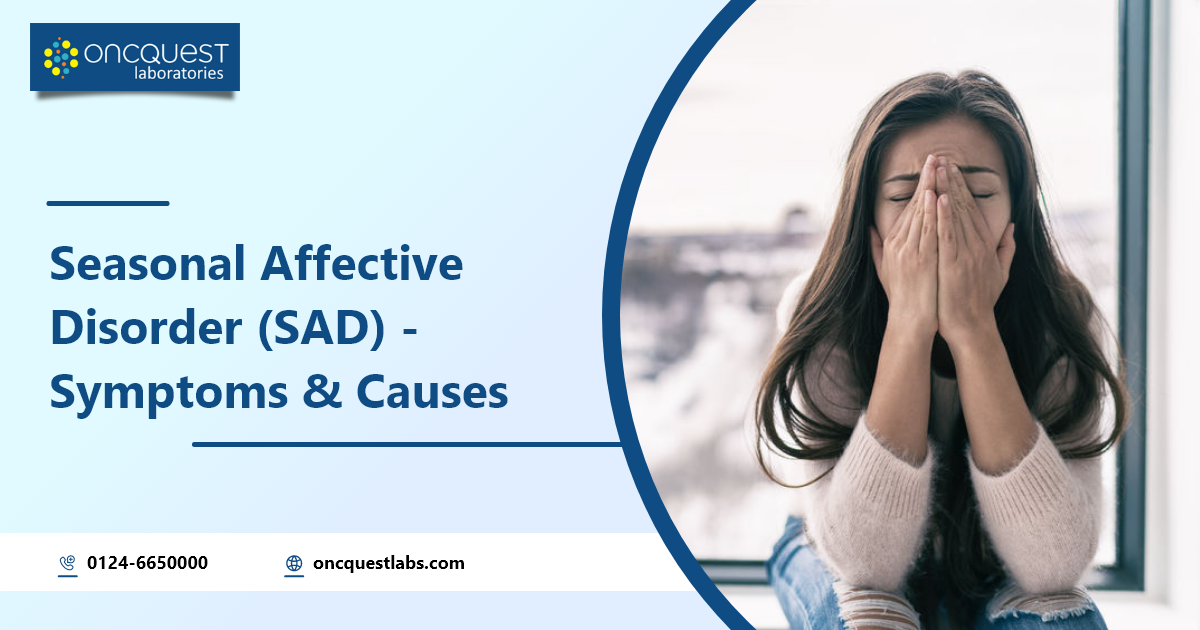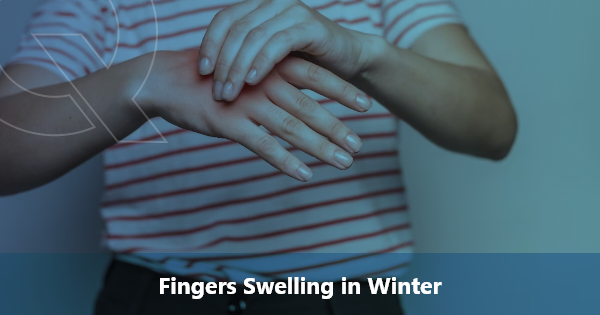Ever noticed that when winter rolls around, some people seem to lose their sparkle? It’s not just the chilly weather; there’s a hidden player called Seasonal Affective Disorder (SAD) that comes into play. But what is this mysterious “SAD,” and why does it affect people when the days get shorter and darker?
In this blog journey, we’re going to unravel the secrets of SAD, breaking down the signs you might notice and understanding why winter blues are more than just a fleeting mood. So, grab a warm cup of tea and join us as we shine a light on Seasonal Affective Disorder, making it easier for everyone to grasp and support those going through it.
Contents
- 1 What is Seasonal Affective Disorder (SAD)?
- 2 Symptoms of Seasonal Affective Disorder (SAD)
- 3 Causes of Seasonal Affective Disorder (SAD)
- 4 Who is at Risk for Seasonal Affective Disorder (SAD)
- 5 Diagnosis for Seasonal Affective Disorder (SAD)
- 6 Treatment for Seasonal Affective Disorder (SAD)
- 7 Prevention from Seasonal Affective Disorder (SAD)
What is Seasonal Affective Disorder (SAD)?
Seasonal Affective Disorder (SAD) is a type of depression that occurs at specific times of the year, typically during the fall and winter months when daylight hours are shorter. People with SAD may experience symptoms such as low energy, mood swings, irritability, difficulty concentrating, changes in sleep patterns, and a general sense of sadness. The exact cause of SAD is not fully understood, but it is thought to be related to changes in sunlight exposure affecting the body’s internal clock (circadian rhythm) and neurotransmitter levels. Light therapy, counseling, and lifestyle adjustments are common approaches to managing SAD symptoms.
Symptoms of Seasonal Affective Disorder (SAD)
The symptoms of Seasonal Affective Disorder (SAD) typically include:
1. Low Energy: Feeling fatigued or lacking in energy, even after a good night’s sleep.
2. Mood Changes: Persistent feelings of sadness, irritability, or mood swings.
3. Difficulty Concentrating: Trouble focusing on tasks or making decisions.
4. Changes in Sleep Patterns: Insomnia or oversleeping, disruptions to the usual sleep routine.
5. Appetite Changes: Increased cravings for carbohydrates and weight gain are common.
6. Loss of Interest: Decreased interest in activities once enjoyed.
7. Social Withdrawal: Withdrawing from social activities and relationships.
8. Feelings of Hopelessness: A sense of despair or hopelessness about the future.
9. Physical Symptoms: Some may experience physical symptoms such as aches and pains.
It’s important to note that these symptoms tend to recur seasonally, typically starting in the fall and continuing into the winter months. If you or someone you know is experiencing these symptoms, seeking professional help is advisable for accurate diagnosis and appropriate management.
Causes of Seasonal Affective Disorder (SAD)
The exact causes of Seasonal Affective Disorder (SAD) are not fully understood, but several factors are believed to contribute:
1. Biological Clock (Circadian Rhythm): Disruptions in the body’s internal clock, influenced by changes in sunlight exposure during shorter days, can affect mood-regulating hormones.
2. Neurotransmitter Levels: Reduced sunlight exposure may lead to a drop in serotonin levels, a neurotransmitter associated with mood regulation. Additionally, disruptions in melatonin, a hormone that regulates sleep, may contribute to SAD symptoms.
3. Genetics: There may be a genetic predisposition, as individuals with a family history of SAD or other forms of depression may be more susceptible.
4. Melatonin Regulation: Changes in light exposure can affect the body’s production of melatonin, which plays a role in sleep-wake cycles and mood.
5. Serotonin Transporter: Variations in the serotonin transporter gene have been linked to an increased risk of developing SAD.
It’s likely that a combination of these factors contributes to the development of SAD. Understanding these underlying mechanisms is essential for developing effective treatment strategies, which often include light therapy, counseling, and lifestyle adjustments.
Who is at Risk for Seasonal Affective Disorder (SAD)
Several factors can increase the risk of developing Seasonal Affective Disorder (SAD). Individuals at higher risk may include:
1. Geographic Location: People living at higher latitudes with less sunlight during the winter months are more prone to SAD.
2. Age and Gender: SAD is more common in younger adults and tends to affect women more frequently than men.
3. Family History: Having a family history of SAD or other forms of depression may increase the risk.
4. Personal History of Depression or Bipolar Disorder: Individuals with a history of depression or bipolar disorder may be more susceptible to developing SAD.
5. Climate and Seasonal Changes: SAD is more prevalent in regions with distinct seasonal changes, where sunlight exposure varies significantly between seasons.
6. Occupational Factors: Certain professions that involve limited sunlight exposure, such as shift work or indoor jobs, may increase the risk.
7. Lifestyle Factors: Lack of outdoor activities and reduced exposure to natural light can contribute to the development of SAD.
It’s important to note that while these factors may increase the likelihood of experiencing SAD, the disorder can affect individuals without these risk factors as well.
Diagnosis for Seasonal Affective Disorder (SAD)
Diagnosing Seasonal Affective Disorder (SAD) typically involves a thorough assessment by a healthcare professional, such as a psychiatrist or mental health provider. The process may include:
1. Clinical Evaluation: A detailed discussion of symptoms, their duration, and their impact on daily life is conducted.
2. Diagnostic Criteria: Healthcare providers use established diagnostic criteria, such as those outlined in the DSM-5 (Diagnostic and Statistical Manual of Mental Disorders), to determine if the symptoms align with SAD.
3. Seasonal Pattern Assessment: The healthcare provider will explore whether symptoms recur at specific times of the year, particularly during fall and winter.
4. Physical Examination: A physical examination may be performed to rule out other potential causes of symptoms.
5. Laboratory Tests: In some cases, blood tests may be conducted to rule out other medical conditions that can mimic SAD symptoms.
6. Psychological Assessment: Assessing mental health through standardized questionnaires or interviews helps in understanding the severity of symptoms and their impact.
It’s important for individuals experiencing symptoms of SAD to seek professional help for an accurate diagnosis. Once diagnosed, appropriate treatment options, such as light therapy, counseling, or medication, can be discussed and implemented based on the severity of the disorder.
Treatment for Seasonal Affective Disorder (SAD)
Treatment for Seasonal Affective Disorder (SAD) aims to alleviate symptoms and improve overall well-being. Common treatment approaches include:
1. Light Therapy (Phototherapy): Exposure to bright light that mimics natural sunlight is a key component of SAD treatment. Light therapy involves daily sessions in front of a lightbox, typically in the morning, to regulate the body’s circadian rhythm.
2. Counseling (Psychotherapy): Cognitive-behavioral therapy (CBT) has shown effectiveness in treating SAD. It helps individuals identify and change negative thought patterns and behaviors associated with their symptoms.
3. Medication: Antidepressant medications, particularly selective serotonin reuptake inhibitors (SSRIs), may be prescribed in some cases to help regulate neurotransmitter levels and alleviate depressive symptoms.
4. Lifestyle Changes: Adopting healthy lifestyle habits, such as regular exercise, maintaining a balanced diet, and managing stress, can contribute to overall well-being and help alleviate SAD symptoms.
5. Sunlight Exposure: Spending time outdoors during daylight hours, even on cloudy days, can be beneficial. Increased exposure to natural light helps regulate circadian rhythms.
6. Mind-Body Techniques: Practices such as meditation, yoga, and relaxation techniques can help manage stress and improve mood.
Individuals with SAD may benefit from a combination of these treatments, tailored to their specific symptoms and needs. It’s essential to consult with a healthcare professional for a personalized treatment plan and ongoing support.
Prevention from Seasonal Affective Disorder (SAD)
While Seasonal Affective Disorder (SAD) may not be entirely preventable, certain lifestyle adjustments and self-care practices can potentially reduce the risk or alleviate symptoms. Consider the following preventive measures:
1. Light Exposure: Increase exposure to natural light, especially during the fall and winter months. Spend time outdoors during daylight hours, and consider using light therapy if sunlight exposure is limited.
2. Regular Exercise: Engage in regular physical activity, as exercise is known to boost mood and energy levels. Aim for activities that you enjoy, whether it’s walking, jogging, dancing, or other forms of exercise.
3. Balanced Diet: Maintain a balanced and nutritious diet. Ensure you are getting enough vitamins and minerals, as nutritional imbalances can impact mood.
4. Consistent Sleep Schedule: Prioritize a regular sleep schedule. Create a sleep-friendly environment and aim for a consistent sleep routine to support overall well-being.
5. Mindfulness and Stress Management: Incorporate mindfulness practices, such as meditation or yoga, into your routine to manage stress and promote emotional well-being.
6. Social Connection: Stay connected with friends and family. Social support can provide a buffer against depressive symptoms.
7. Plan Enjoyable Activities: Plan activities you enjoy and look forward to during the fall and winter months. This can help counteract the negative effects of seasonal changes on mood.
8. Professional Support: If you have a history of SAD or are at higher risk, consider consulting with a mental health professional proactively. They can provide guidance on preventive measures and offer support if symptoms arise.
It’s essential to tailor these strategies to individual needs, and seeking professional advice can provide personalized recommendations for prevention and coping with Seasonal Affective Disorder.
Wrapping Up
As we conclude our exploration of Seasonal Affective Disorder (SAD), it’s crucial to recognize that this condition affects individuals in unique ways, often presenting challenges during specific seasons. Whether you’re seeking to understand SAD for yourself or to support others, awareness and compassion play pivotal roles.
Remember, SAD is a treatable condition, and various approaches, from light therapy to lifestyle adjustments, can make a significant difference. If you or someone you know is experiencing symptoms, seeking professional guidance is a vital step toward managing and overcoming Seasonal Affective Disorder.
As we navigate the changing seasons, let’s foster a community that acknowledges and supports mental health, ensuring that no one faces the shadows alone. If you have further questions or seek additional information, feel free to reach out. Until then, may brighter days be on the horizon for all.





